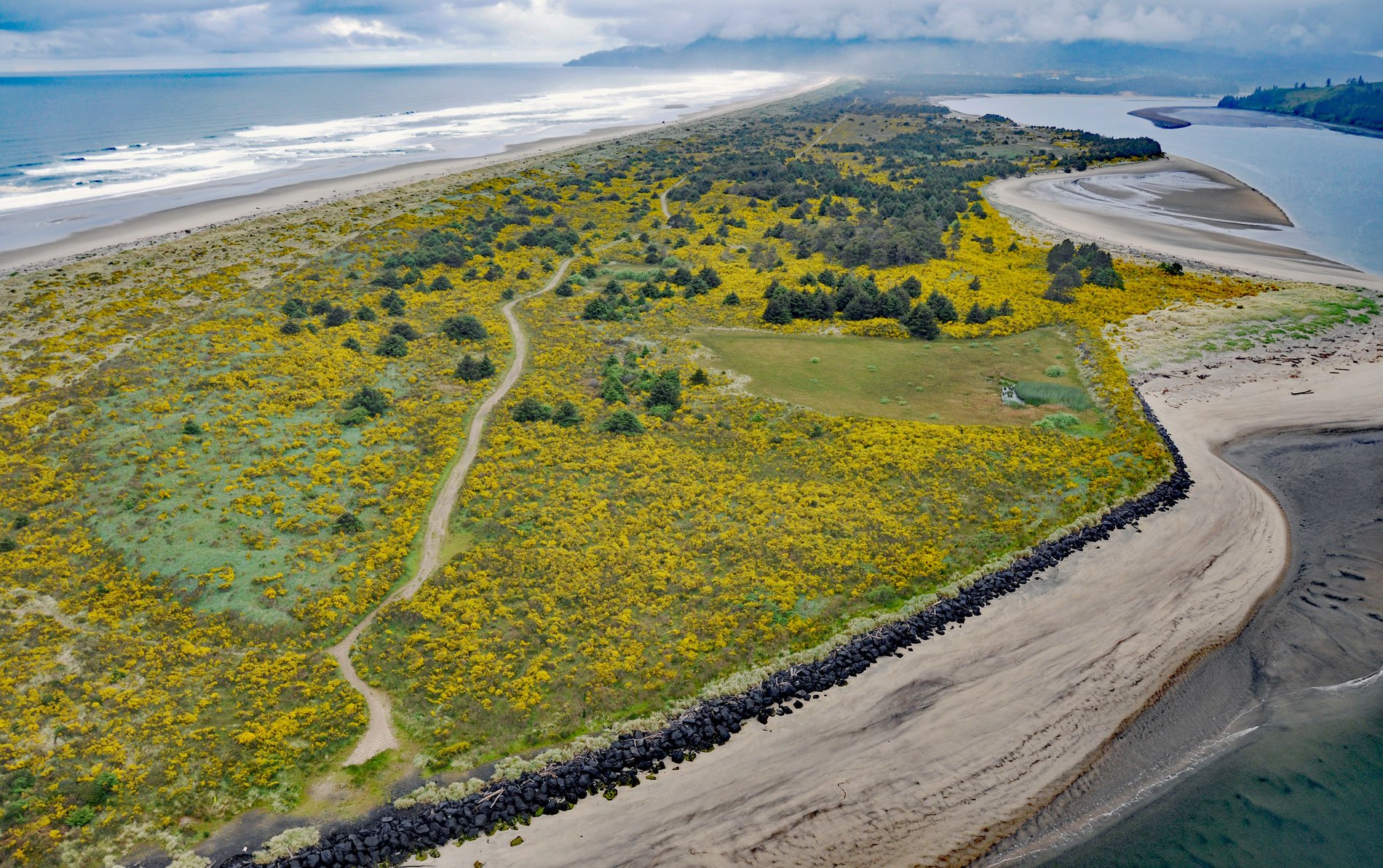Nehalem Spit is an alongshore dune that separates Nehalem Bay from the Pacific Ocean in Nehalem Bay State Park, about 15 miles (25 km) north-northwest of Tillamook and 3.8 miles (6 km) south of Manzanita, Oregon. The sandspit is part of Nehalem Bay State Park. Nehalem Bay is an estuary at the mouth of the Nehalem River that drains a watershed of about 855 square miles (221,444 ha) in the Oregon Coast Range. The name is derived from the Nehalem people, a subgroup of the Tillamook people, who inhabited this area for millennia. The Spanish galleon San Francisco Xavier disappeared en route from Manila in the Philippines to Acapulco, Mexico, and may have wrecked on Nehalem Spit in 1705, carrying a large cargo of beeswax, lumps of which have been found on the coast for at least two centuries. During the 1940s and 1950s, European beachgrass, shore pine, and Scotch broom were planted for dune stabilization.
The community of Nehalem is located at the mouth of the Nehalem River on the western shore of Nehalem Bay. The town began in the latter portion of the 19th century supported by logging, fishing, and shipping. The community of Wheeler is on the eastern shore of Nehalem Bay, at the head of deepwater navigation, about 2.3 miles (3.7 km) south-southeast of Nehalem. The town was founded around 1912 by Coleman Wheeler who started the Wheeler Lumber Company that operated the largest sawmill on the bay. Coleman Wheeler also owned the Nehalem Transportation Company that operated C.H. Wheeler, a schooner-rigged lumber barge that operated in 1901, making only a few voyages before it was wrecked near Yaquina Bay. The Union Fishermans Packing Company operated a salmon cannery at Wheeler. These industries located here primarily because of co-located resources with a railroad to transport products to markets.
The Southern Pacific Railroad operated a rail line that connected Portland with Tillamook. The Oregon Coastal Railroad was built between 1906 and 1911 and ran for 88 miles from Tillamook, up the coast to Wheeler, then east through the Coast Range to Portland. Southern Pacific abandoned the operation in 1990 and the Port of Tillamook purchased the entire line. They continued operating the railroad until the floods of 2007 destroyed large sections of the railroad in the Coast Range. The Port of Tillamook continues to maintain the section of coastal track between Garibaldi and Wheeler which serves Oregon Coast Scenic Railroad. Read more here and here. Explore more of Nehalem Spit and Nehalem Bay here:

